Zen in the Kitchen Embracing Minimalism with Japandi Design

Ever walked into a kitchen that felt like a breath of fresh air? That sensation of calm is at the heart of Japandi kitchen design, a style that merges the minimalist elegance of Japanese aesthetics with the cosy functionality of Scandinavian design. This approach to kitchen design not only elevates the space but also introduces a sense of Zen, transforming cooking and dining into a serene experience.
The Essence of Japandi Design
At its core, the Japandi kitchen design focuses on minimalism, emphasising clean lines, natural materials, and a soothing neutral colour palette. This design philosophy is about stripping away the unnecessary, leaving only what is essential and beautiful. It's a reflection of a lifestyle that deeply values quality over quantity, where every object within the space has a purpose and a rightful place. This minimalist approach creates a kitchen that is both highly functional and aesthetically calming.
To better understand the Japandi design approach, give our guide on “Japandi Style” a read.

Harmonizing Function and Form
In a Japandi kitchen, the harmony between function and form is paramount. The design seamlessly integrates innovative storage solutions and practical, sleek kitchen appliances without compromising its minimalist aesthetic. This delicate balance ensures that the kitchen is not only a place for culinary exploration but also a sanctuary of peace and simplicity. By adopting this design philosophy, homeowners can enjoy a clean space that is both highly functional and deeply soothing to look at.

Materials and Colours in Japandi Design
The choice of materials and colours plays a crucial role in achieving the distinct Japandi look. Natural materials like wood, stone, and bamboo are preferred for their organic textures and warm, earthy tones, contributing to a sense of warmth and tranquillity. The colour palette is typically muted, consisting of whites, blacks, greys, and occasional soft pastels. These elements come together seamlessly to create a serene and inviting atmosphere, characteristic of the Japandi kitchen.

Lighting: The Soul of the Space
Lighting in the Japandi kitchen is not just functional; it's an essential element that significantly enhances the Zen-like atmosphere. Soft, diffused lighting is preferred over harsh, direct light sources, promoting a sense of calm and deep relaxation. On the other hand, incorporating natural light wherever possible is also key, as it highlights the beauty of the natural materials and soothing colours, further reinforcing the connection to nature that is central to Japandi's design philosophy.

Bringing Nature Indoors
One of the defining hallmarks of the Japandi kitchen is the thoughtful incorporation of elements from nature. This can be achieved through the strategic use of indoor plants, natural materials, and even artwork that vividly depicts serene natural scenes. These elements are not merely decorative; they're integral to creating a space that feels vibrantly alive and deeply connected to the outside world. By bringing nature indoors, the Japandi kitchen becomes a true oasis of calm in any residential space.

Personal Touches in Japandi Design
While minimalism is a key aspect of the Japandi kitchen, personal touches are equally important. These can come in the form of handmade ceramics, artisanal textiles, or even a carefully chosen piece of art. These elements add warmth and character to the space, making it feel welcoming and lived-in. It's these personal touches that turn a Japandi kitchen from a beautifully designed space into a home.
To conclude, the Japandi kitchen is more than just a design trend; it's a reflection of a lifestyle that values simplicity, beauty, and functionality. By embracing the principles of Japandi design, homeowners can create a kitchen that is not only a pleasure to cook in but also a space that brings a sense of peace and Zen into their daily lives. It's a reminder that in the hustle and bustle of modern life, there can be sanctuaries of calm and simplicity, and the kitchen is a perfect place to start.

Embrace Zen with The-Rugs
Ready to bring the serene beauty of a Japandi kitchen into your home? The Rugs offers a curated selection of minimalist rugs that perfectly complement the Japandi aesthetic. With our emphasis on quality, natural materials, and timeless design, you can find the perfect piece to complete your Zen kitchen space. Visit us today and take the first step towards embracing Zen with Japandi design.
If you've been inspired by the tranquil beauty and minimalist elegance of Zen in the kitchen by embracing minimalism with Japandi design, you may be wondering how to extend this serene aesthetic throughout your entire home. Our next feature, "How to Add Japandi Style to Your Home," is the perfect guide to help you infuse every room with the calming balance that Japandi style offers.
What Japandi Kitchen Ideas: Blending Japanese and Scandinavian Aesthetics
The Japandi kitchen design trend combines the minimalist, nature-inspired elements of Japanese and Scandinavian styles. This harmonious fusion creates a serene and functional cooking space. Key Japandi kitchen ideas include:
- Neutral Colour Palette: Embrace soft, earthy tones like whites, greys, and natural wood tones.
- Clean Lines and Simplicity: Opt for streamlined cabinetry and uncluttered surfaces.
- Incorporation of Natural Materials: Use materials like wood, stone, and bamboo to connect the kitchen to nature.
- Emphasis on Texture: Introduce textural elements through woven baskets, linen textiles, or matte finishes.
- Minimalist Decor: Curate a few carefully selected accessories and plants to avoid visual clutter.

What Japandi Kitchen Interior Design: Achieving Balance and Harmony
Japandi kitchen interior design focuses on creating a harmonious and serene atmosphere. Key elements include:
- Open, Airy Layouts: Maximise natural light and a sense of spaciousness.
- Integrated Storage Solutions: Seamlessly incorporate storage into the overall design.
- Muted Colour Palettes: Rely on soft neutrals, natural wood tones, and occasional pops of green or blue.
- Multifunctional Furniture: Choose pieces that serve both practical and aesthetic purposes.
- Emphasis on Craftsmanship: Highlight the beauty of high-quality, artisanal materials and finishes.
What Japandi Kitchen Cabinets: Streamlined and Functional
Japandi kitchen cabinets embody the principles of minimalism and functionality. Look for:
- Flat-Panel or Shaker-Style Doors: Clean, simple cabinet fronts create a refined aesthetic.
- Neutral Finishes: Opt for light wood tones, white, or grey for a calming, cohesive look.
- Concealed Hardware: Minimise visible hardware for a seamless, uncluttered appearance.
- Integrated Storage: Incorporate features like pull-out pantries or hidden spice racks.
- Ample Natural Lighting: Position cabinets to maximise the flow of natural light.

What Japandi Kitchen Furniture: Blending Form and Function
Japandi kitchen furniture combines Scandinavian practicality with Japanese elegance. Consider:
- Wooden Dining Tables: Solid wood or wood-topped tables create a warm, natural feel.
- Upholstered Dining Chairs: Incorporate soft, neutral-toned fabrics for comfort and style.
- Minimalist Bar Stools: Simple, clean-lined stools complement the Japandi aesthetic.
- Freestanding Islands or Carts: Movable furniture pieces add flexibility and visual interest.
- Bamboo or Rattan Accents: Introduce natural textures to balance the clean lines.
What Japandi Kitchen Paint: Calming Colour Palettes
The Japandi kitchen paint palette focuses on soothing, nature-inspired hues. Explore:
- Soft Whites: Create a bright, airy atmosphere.
- Muted Greys: Offer a sophisticated, understated backdrop.
- Earthy Beiges: Warm up the space with natural tones.
- Sage or Olive Greens: Bring in subtle pops of colour inspired by nature.
- Occasional Accents: Use bolder hues sparingly, such as deep blues or charcoal, for visual interest.

Japandi Kitchen Doors: Streamlined and Sophisticated
Japandi kitchen doors exemplify the style's emphasis on simplicity and functionality. Look for:
- Flat-Panel or Shaker-Style Doors: Clean, minimalist designs that create a cohesive look.
- Light Wood Tones: Oak, ash, or maple offer a warm, natural aesthetic.
- Integrated Handles: Recessed or push-to-open mechanisms maintain the uncluttered appearance.
- Frosted or Tinted Glass Inserts: Add a touch of privacy and visual interest.
- Seamless Transitions: Coordinate door styles with the overall Japandi kitchen design.

Japandi Kitchen Accessories: Curating a Serene Ambiance
Japandi kitchen accessories help to enhance the calming, nature-inspired atmosphere. Consider:
- Ceramic or Wooden Dishware: Showcase simple, elegant forms and muted tones.
- Woven Baskets or Trays: Introduce natural textures and organic shapes.
- Minimalist Lighting Fixtures: Pendant lights or sconces with clean lines and natural materials.
- Potted Plants or Herb Gardens: Bring the outdoors in and purify the air.
- Artisanal Utensils or Cutting Boards: Highlight the beauty of handcrafted, functional pieces.
By incorporating these Japandi kitchen design elements, you can create a serene, harmonious cooking space that blends the best of Japanese and Scandinavian aesthetics.
How to design a Zen kitchen?
To design a Zen kitchen, focus on simplicity and functionality. Use clean lines, natural materials, and minimize clutter. Incorporate ample storage to maintain a serene atmosphere.
What are the colors for a Zen kitchen?
Zen kitchens typically feature neutral and earthy tones. Think whites, beiges, soft grays, and warm wood tones. These colors promote calmness and tranquility.
How to create a zen kitchen?
Create a Zen kitchen by:
- Decluttering the space
- Using natural materials like wood and stone
- Incorporating plenty of natural light
- Adding plants for a touch of nature
- Choosing minimalist fixtures and appliances
Zen Design Principles
What are the rules of Zen design?
Key rules of Zen design include:
- Simplicity in form and function
- Natural materials and textures
- Balance and harmony
- Minimalism in decor and furnishings
- Connection to nature
What is Zen design concept?
The Zen design concept focuses on creating peaceful, harmonious spaces that promote mindfulness and tranquility. It emphasizes simplicity, natural elements, and a clutter-free environment.
What is Zen style design?
Zen style design is characterized by:
- Minimalist aesthetics
- Natural materials and textures
- Neutral color palettes
- Clean lines and simple forms
- Emphasis on empty space
What are the principles of Zen in design?
Principles of Zen in design include:
- Simplicity (Kanso)
- Asymmetry (Fukinsei)
- Naturalness (Shizen)
- Subtlety (Yugen)
- Break from routine (Datsuzoku)
- Tranquility (Seijaku)
Applying Zen Concepts to Home Design
How can I make my house look Zen?
To make your house look Zen:
- Declutter regularly
- Use a neutral color palette
- Incorporate natural materials
- Maximize natural light
- Add indoor plants
- Create open spaces
What is modern Zen house design?
Modern Zen house design combines traditional Zen principles with contemporary aesthetics. It features clean lines, open spaces, natural materials, and a minimalist approach to decor and furnishings.
How do you make a Zen corner at home?
Create a Zen corner by:
- Choosing a quiet spot
- Adding comfortable seating (e.g., floor cushions)
- Incorporating natural elements (plants, stones)
- Using soft lighting
- Minimizing distractions and clutter
How to design a Zen den?
Design a Zen den by:
- Using calming colors
- Adding comfortable seating
- Incorporating natural textures
- Installing dimmable lighting
- Including elements of nature
- Minimizing technology and distractions
Kitchen Design Concepts
How do you make a minimalist kitchen?
Create a minimalist kitchen by:
- Streamlining storage solutions
- Choosing sleek, handleless cabinets
- Opting for built-in appliances
- Using a monochromatic color scheme
- Keeping countertops clear of clutter
How do you make a dream kitchen?
To create a dream kitchen:
- Plan the layout carefully
- Invest in quality appliances
- Choose durable, beautiful materials
- Incorporate ample storage
- Add personal touches that reflect your style
- Ensure good lighting (natural and artificial)
How do you make a smart kitchen?
Make a smart kitchen by incorporating:
- Smart appliances (refrigerator, oven, dishwasher)
- Voice-controlled assistants
- Automated lighting systems
- Smart faucets and water systems
- Connected coffee makers and small appliances
How do I turn my kitchen into an open concept?
To create an open-concept kitchen:
- Remove non-load-bearing walls
- Use consistent flooring throughout the space
- Create a cohesive color scheme
- Install a kitchen island for additional workspace
- Use lighting to define different areas
Bedroom and Japanese Design
How to design zen bedroom?
Design a Zen bedroom by:
- Using a neutral color palette
- Choosing natural, breathable fabrics
- Minimizing furniture and decor
- Incorporating natural light and soft artificial lighting
- Adding plants for a touch of nature
How to design a Japanese kitchen?
To design a Japanese kitchen:
- Use natural wood elements
- Incorporate sliding doors or screens
- Choose minimalist appliances
- Add a low table for traditional-style dining
- Use open shelving to display beautiful dishware
Color in Zen Design
What color is best for Zen?
The best colors for Zen design are neutral and earthy tones. Whites, beiges, soft grays, and muted earth tones are excellent choices.
What color is the most Zen?
While there's no single "most Zen" color, soft white is often considered highly Zen-like due to its simplicity and ability to create a sense of spaciousness.
What are Zen colours?
Zen colors typically include:
- Whites and off-whites
- Beiges and tans
- Soft grays
- Muted earth tones
- Pale blues and greens
What colors are Zen theme?
Zen theme colors often include:
- Neutral whites and creams
- Warm wood tones
- Soft grays
- Muted greens (like sage)
- Pale blues reminiscent of sky and water
What are Zen neutral colors?
Zen neutral colors include:
- Ivory
- Beige
- Taupe
- Soft gray
- Warm white
Is blue A Zen color?
Yes, soft, muted blues can be considered Zen colors. They evoke feelings of calmness and tranquility, reminiscent of sky and water.
Is green a Zen color?
Yes, muted and natural greens are often used in Zen design. They represent nature and promote a sense of balance and harmony.
What is a happy color for a kitchen?
While "happy" colors can vary, warm yellows, soft oranges, and light greens are often considered cheerful choices for kitchens.
What is the most appealing kitchen color?
The most appealing kitchen color often depends on personal preference, but white remains a popular and versatile choice. It creates a clean, bright, and spacious feel.
Zen Decor and Room Design
What does Zen decor look like?
Zen decor typically features:
- Minimalist furniture
- Natural materials (wood, stone, bamboo)
- Neutral color palette
- Few, carefully chosen decorative items
- Plants and natural elements
How to design a Zen room?
To design a Zen room:
- Declutter the space
- Use a neutral color palette
- Incorporate natural materials
- Maximize natural light
- Add plants or nature-inspired elements
- Choose simple, functional furniture
- Create a focal point (e.g., a small altar or artwork)
What are the rules of Japandi style?
Japandi style harmoniously blends Japanese and Scandinavian design principles, emphasizing minimalism and functionality. Key rules include using natural materials, incorporating a neutral color palette with occasional muted accents, and focusing on clean lines and simple forms. The style embraces the concept of "less is more" and prioritizes quality over quantity in furnishings and decor.
Why is Japandi so expensive?
Japandi's higher price tag stems from its emphasis on high-quality, sustainable materials and expert craftsmanship. The minimalist approach requires carefully chosen, well-made pieces, often resulting in investments in artisanal or designer items. The use of premium natural materials like solid wood and organic textiles further contributes to the overall cost.
What is Japandi style kitchen?
A Japandi style kitchen seamlessly blends functionality with aesthetic simplicity. It typically features clean lines, natural wood elements, and a muted color scheme. Open shelving, minimalist cabinetry, and integrated appliances are common. The space prioritizes clutter-free countertops and incorporates ample natural light to create a calm, welcoming atmosphere.
Is Japandi still trendy?
Japandi style remains trendy and relevant in 2025 interior design. It continues to appeal to those seeking a balance between minimalism and warmth in their homes. The style's focus on natural materials, functionality, and serene aesthetics aligns well with ongoing trends in sustainable and wellness-oriented design, making it a lasting trend rather than a passing fad.
What is the difference between Wabi-Sabi and Japandi?
While both have Japanese roots, Wabi-Sabi and Japandi differ significantly. Wabi-Sabi embraces imperfection and transience, finding beauty in the aged and worn. Japandi, however, combines Japanese minimalism with Scandinavian functionality, resulting in a more polished and curated aesthetic. Japandi tends to have a cleaner, more modern look, while Wabi-Sabi celebrates the rustic and imperfect.
What are the 5 Japanese rules?
The five Japanese design principles include: Kanso (simplicity), emphasizing clutter elimination; Shizen (naturalness), incorporating natural elements; Yugen (subtlety), suggesting rather than overtly stating; Fukinsei (asymmetry), embracing imperfection; and Datsuzoku (break from routine), incorporating unexpected elements. These principles significantly influence Japanese design, including architecture and interior styling.
What style is similar to Japandi?
Styles similar to Japandi include Scandinavian and Modern Minimalism, sharing a focus on simplicity, functionality, and clean lines. Zen-inspired design also bears similarities, emphasizing tranquility and connection with nature. Eco-minimalism shares Japandi's use of natural materials and sustainable approach to design, making it another comparable style.
Why are Japanese furniture so low?
Japanese furniture is traditionally low to the ground due to cultural practices involving floor-based activities. This design allows for efficient use of vertical space in smaller homes and maintains a connection to nature by being closer to the ground. Low furniture often serves multiple purposes, aligning with the minimalist approach and influencing modern trends, including aspects of Japandi style.
How to achieve Japandi interior?
To achieve a Japandi interior, use a neutral color palette with occasional muted accent colors. Incorporate natural materials like wood, bamboo, and stone. Focus on clean lines and minimalist designs in furniture and decor. Blend functional Scandinavian pieces with Japanese-inspired elements. Add texture through fabrics and natural fibers. Embrace negative space and avoid clutter. Incorporate plants to bring nature indoors and use soft, warm lighting to create a cozy atmosphere.
Which kitchen style is timeless?
While preferences vary, certain kitchen styles tend to remain timeless. Classic white kitchens with simple, clean lines often stand the test of time. Shaker style kitchens, known for simplicity and functionality, remain popular. Transitional kitchens blending traditional and contemporary elements create a timeless appeal. Modern farmhouse and minimalist designs also offer enduring charm. Interestingly, Japandi kitchens are gaining recognition for their potential timelessness, blending minimalist aesthetics with warm, natural elements.
What is Japandi's theme?
Japandi's theme centers around the harmonious fusion of Japanese and Scandinavian design philosophies. Key themes include minimalism with warmth, functionality combined with aesthetic appeal, and the use of natural materials and textures. Neutral color palettes with occasional muted accents, a balance between comfort and simplicity, and an emphasis on craftsmanship and quality in furniture and decor are also central. The style creates spaces that are both serene and inviting, focusing on essential elements and quality craftsmanship.
What is G shaped kitchen?
A G-shaped kitchen extends the U-shaped design with an additional partial fourth wall of cabinetry, creating a horseshoe shape with an added peninsula or small island. This layout offers ample counter space and storage, an efficient work triangle, and separation from other living areas. It also provides potential for a small seating area on the peninsula. G-shaped kitchens work well in medium to large spaces but may feel cramped in smaller kitchens.
Is rattan used in Japandi style?
Yes, rattan is often incorporated in Japandi style. It aligns well with the style's emphasis on natural materials and textural elements. Rattan brings a warm, organic feel to spaces and can be used in furniture pieces, lighting fixtures, or decorative elements. Its light color and natural texture complement the neutral palette and minimalist aesthetic of Japandi interiors.
What style is Grandmillennial?
Grandmillennial style, also known as "granny chic," embraces traditional decor with a modern twist. It features floral patterns, chintz fabrics, vintage furniture pieces, needlepoint, and embroidery. Ruffles, fringe details, and antique accessories are common. The style boldly mixes patterns and textures, often using pastel color palettes with pops of saturated hues. It appeals to younger generations seeking comfort and nostalgia in their decor choices.
Is Japandi style timeless?
Japandi style has the potential to be timeless due to its focus on simplicity, functionality, and quality. Its blend of two enduring design traditions – Japanese and Scandinavian – creates a balanced aesthetic that resists passing trends. The style's emphasis on natural materials and minimalist principles aligns with long-term trends in sustainable and wellness-oriented design. While no style is truly eternal, Japandi's core elements suggest it will have lasting appeal in interior design.
What is the difference between Japandi and Muji style?
While Japandi and Muji styles share some similarities, they have distinct characteristics. Japandi blends Japanese and Scandinavian design, incorporating warm, natural elements and a mix of textures and materials. It can include subtle patterns and accents. Muji style, purely Japanese in origin, is extremely minimalist and focuses on functionality above all. It uses a very limited color palette, often just white and wood tones, and emphasizes simplicity and lack of branding. Muji style is generally more austere and uniform, while Japandi allows for more warmth and variety within its minimalist framework.
What is the difference between Hygge and wabi-sabi?
Hygge (Danish) and wabi-sabi (Japanese) are distinct concepts with different cultural origins. Hygge focuses on creating cozy, comfortable atmospheres, emphasizing warmth, togetherness, and contentment. It often includes soft textures, warm lighting, and comforting elements. Wabi-sabi, on the other hand, celebrates imperfection and transience, finding beauty in the aged, worn, or incomplete. It embraces simplicity and naturalness. While both concepts value simplicity and authenticity, hygge is more about creating a warm, inviting atmosphere, while wabi-sabi is a philosophical approach to finding beauty in imperfection and the passage of time.
What is the difference between Japandi and Scandinavian?
While Japandi incorporates elements of Scandinavian design, there are key differences. Japandi blends Japanese and Scandinavian aesthetics, using a warmer color palette with earthy tones and incorporating more organic shapes and textures. It embraces some decorative elements and artisanal crafts. Scandinavian design, in contrast, focuses on light, airy spaces, uses a cooler color palette with lots of white, and emphasizes functionality and simplicity. It often features more colorful accents and patterns. Japandi tends to be slightly more ornate and warm compared to the typically stark and bright Scandinavian style.
What is the golden rule in Japan?
The "golden rule" in Japan often refers to the concept of "wa" (和), which means harmony. This principle emphasizes maintaining social harmony in all interactions, avoiding conflict and confrontation, respecting hierarchy and social norms, prioritizing group needs over individual desires, and striving for consensus in decision-making. This concept influences many aspects of Japanese culture, including design, where balance and harmony are key principles.
Why is 4 taboo in Japan?
The number 4 is considered taboo in Japan due to its pronunciation. In Japanese, 4 can be pronounced as "shi," which is the same pronunciation as the word for death (死). This linguistic similarity has led to the avoidance of the number in many contexts, such as skipping the 4th floor in some buildings, avoiding gifts in sets of four, and using alternative pronunciations (yon) when possible. This superstition, known as "tetraphobia," is common in several East Asian cultures and can influence design choices, such as avoiding four-item groupings in decor.
How to overcome laziness in Japanese?
In Japanese culture, overcoming laziness often involves practicing "ganbaru" (頑張る) - perseverance and doing one's best, implementing "kaizen" (改善) - continuous improvement in small steps, following a structured routine or "kata" (型), embracing "ikigai" (生き甲斐) - finding one's purpose or reason for being, and using the "Pomodoro Technique" (popular in Japan) for time management. These concepts can be applied to various aspects of life, including home organization and design, encouraging regular maintenance and improvement of living spaces.
What is the difference between Lagom and hygge?
Lagom (Swedish) and hygge (Danish) are Scandinavian concepts with distinct focuses. Lagom means "just the right amount" and emphasizes balance and moderation in all aspects of life. It focuses on sustainability and not overconsuming, applying to design through minimalism and functionality. Hygge, on the other hand, emphasizes coziness and comfortable conviviality, focusing on creating warm, inviting atmospheres. It often involves soft textures, warm lighting, and comforting elements. In design, hygge translates to creating snug, welcoming spaces. While both concepts value simplicity, lagom is more about finding the perfect balance, while hygge is about creating moments of comfort and warmth.
Is Grandmillennial out of style?
Grandmillennial style, which gained popularity in recent years, is still relevant in 2025. While design trends evolve, this style's nostalgic appeal and personalized approach to decor continue to resonate with many. The style has adapted, incorporating more modern elements while retaining its core characteristics of traditional patterns and vintage-inspired pieces. Its emphasis on comfort and individuality aligns with ongoing trends in creating personalized, meaningful spaces.
Is Japandi a fad?
Japandi is not considered a fad but rather a lasting design trend. Its staying power is attributed to several factors: a timeless aesthetic created by combining Japanese and Scandinavian design principles, alignment with sustainability trends through the focus on natural materials and quality craftsmanship, versatility in adapting to various spaces and personal preferences, and a wellness-oriented approach that creates calm, uncluttered spaces. As of 2025, Japandi continues to be a popular choice in interior design, evolving and adapting while maintaining its core principles.
Related Blog Posts
How to Add Japandi Style to Your Home
Related Rug Collections




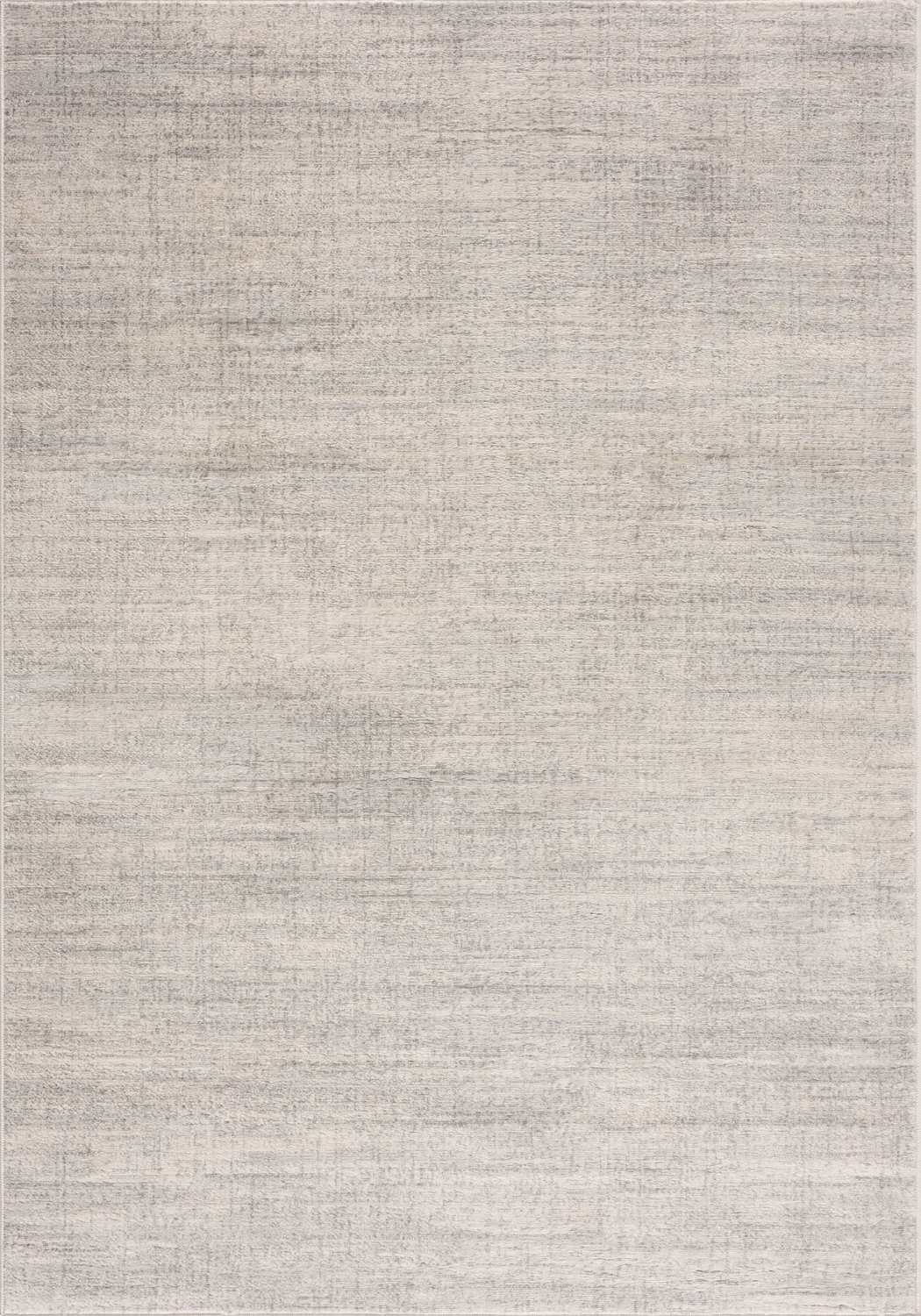
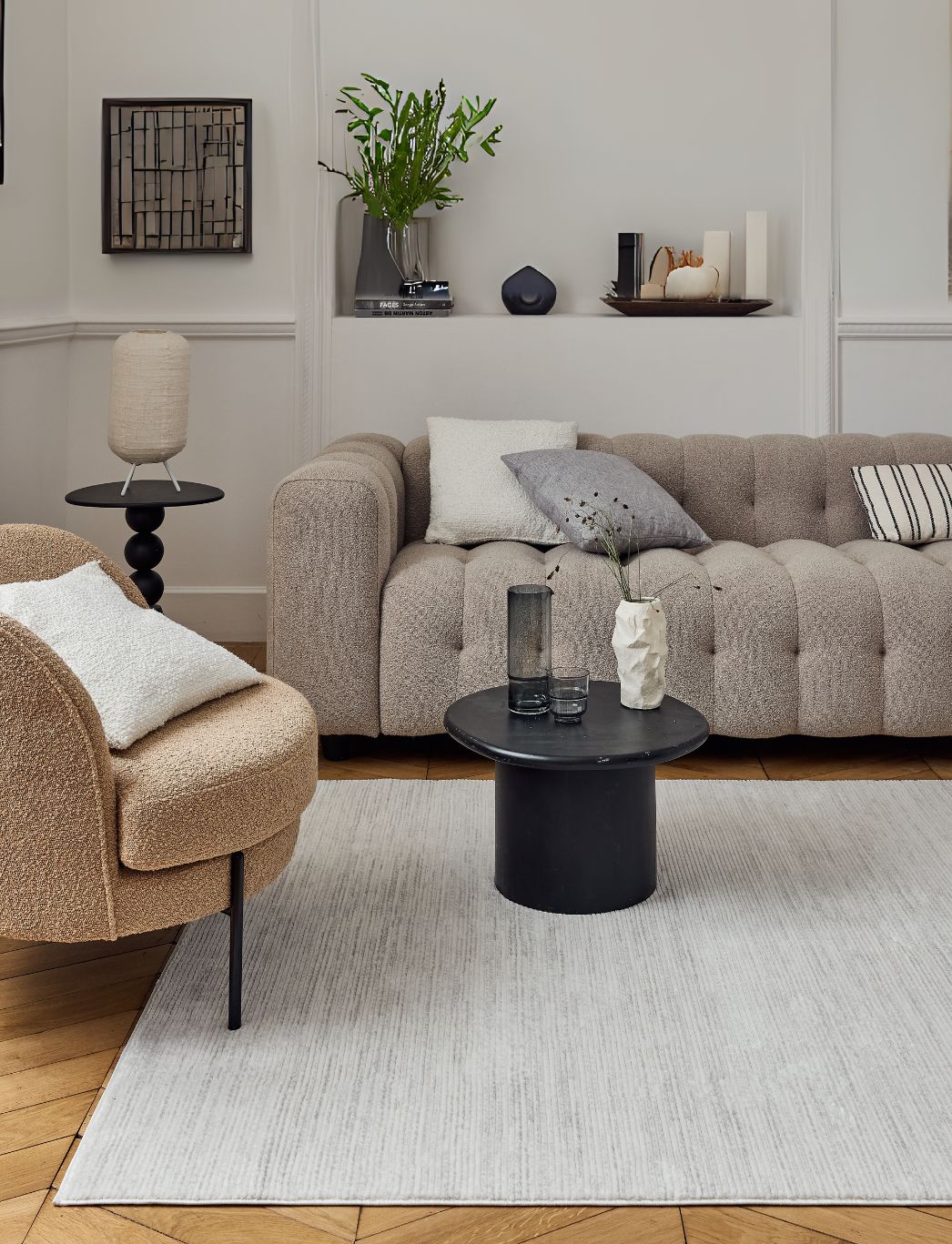
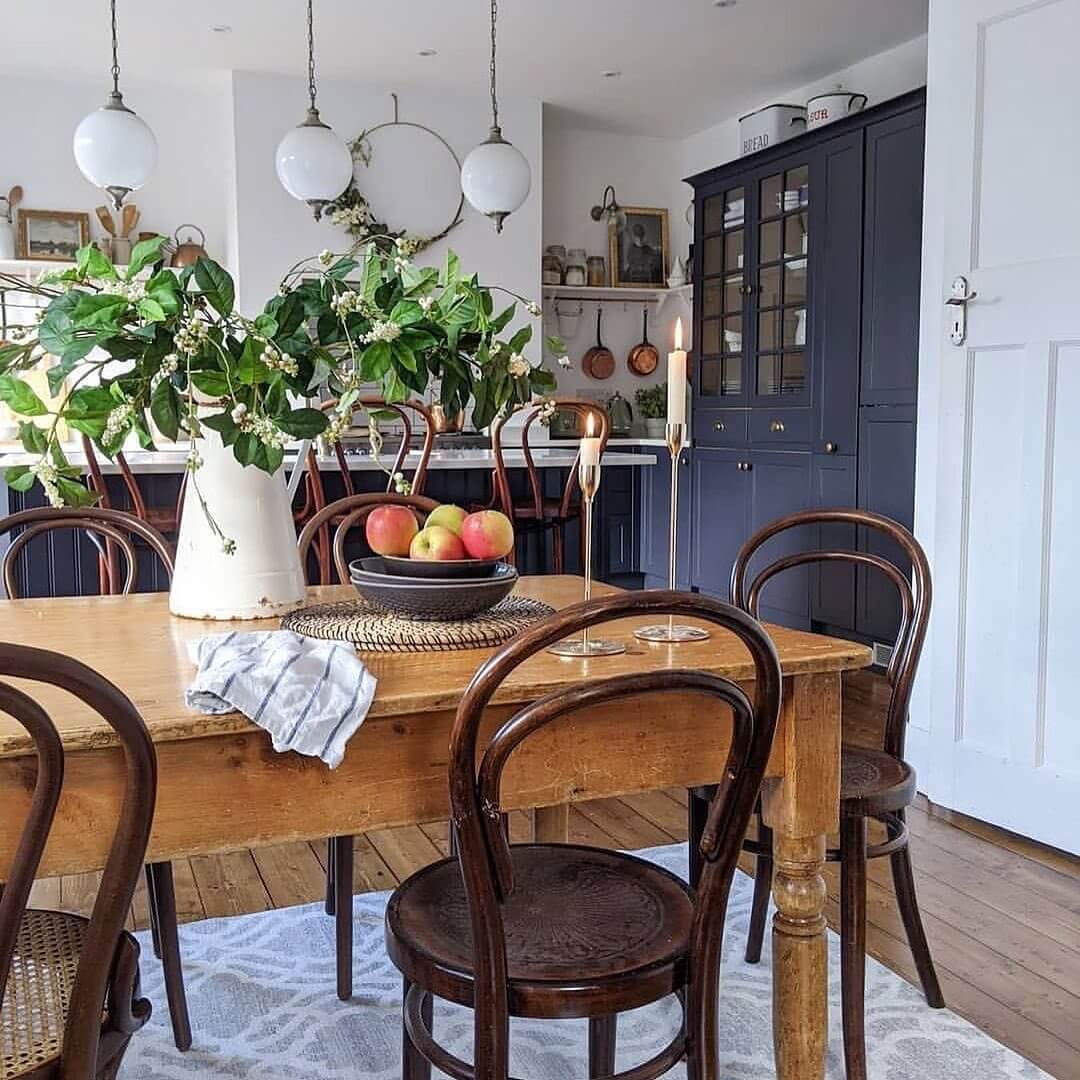
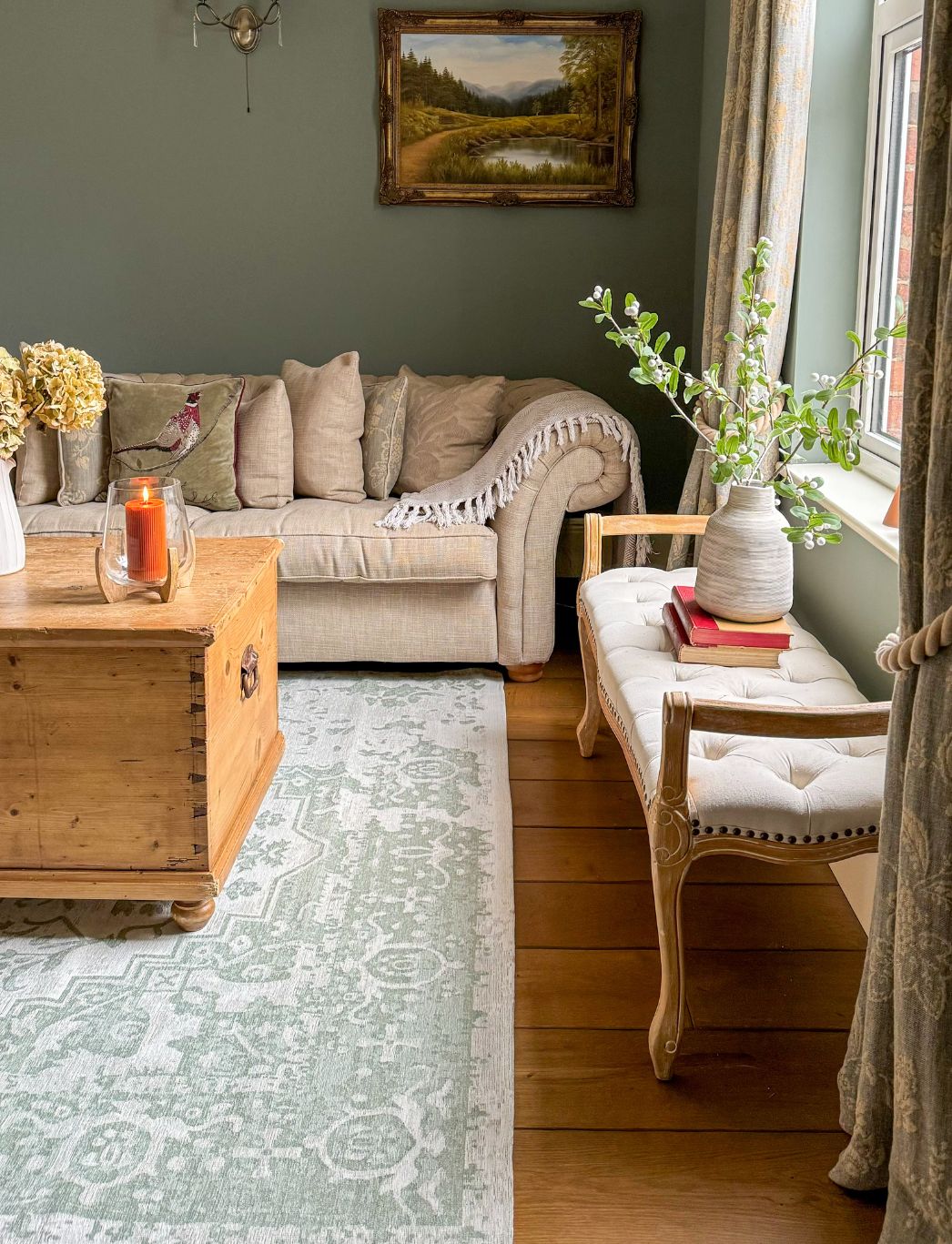

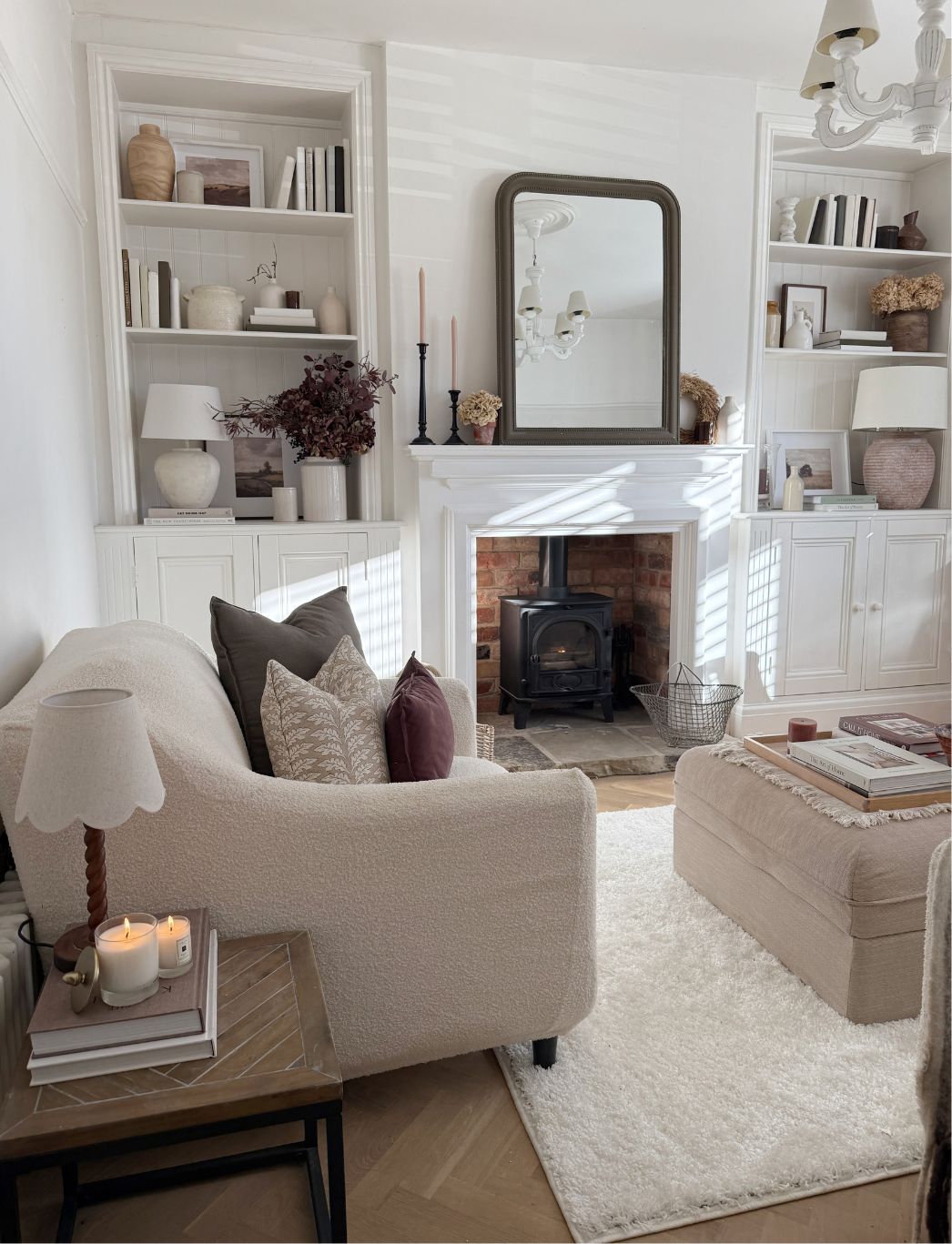
Leave a comment